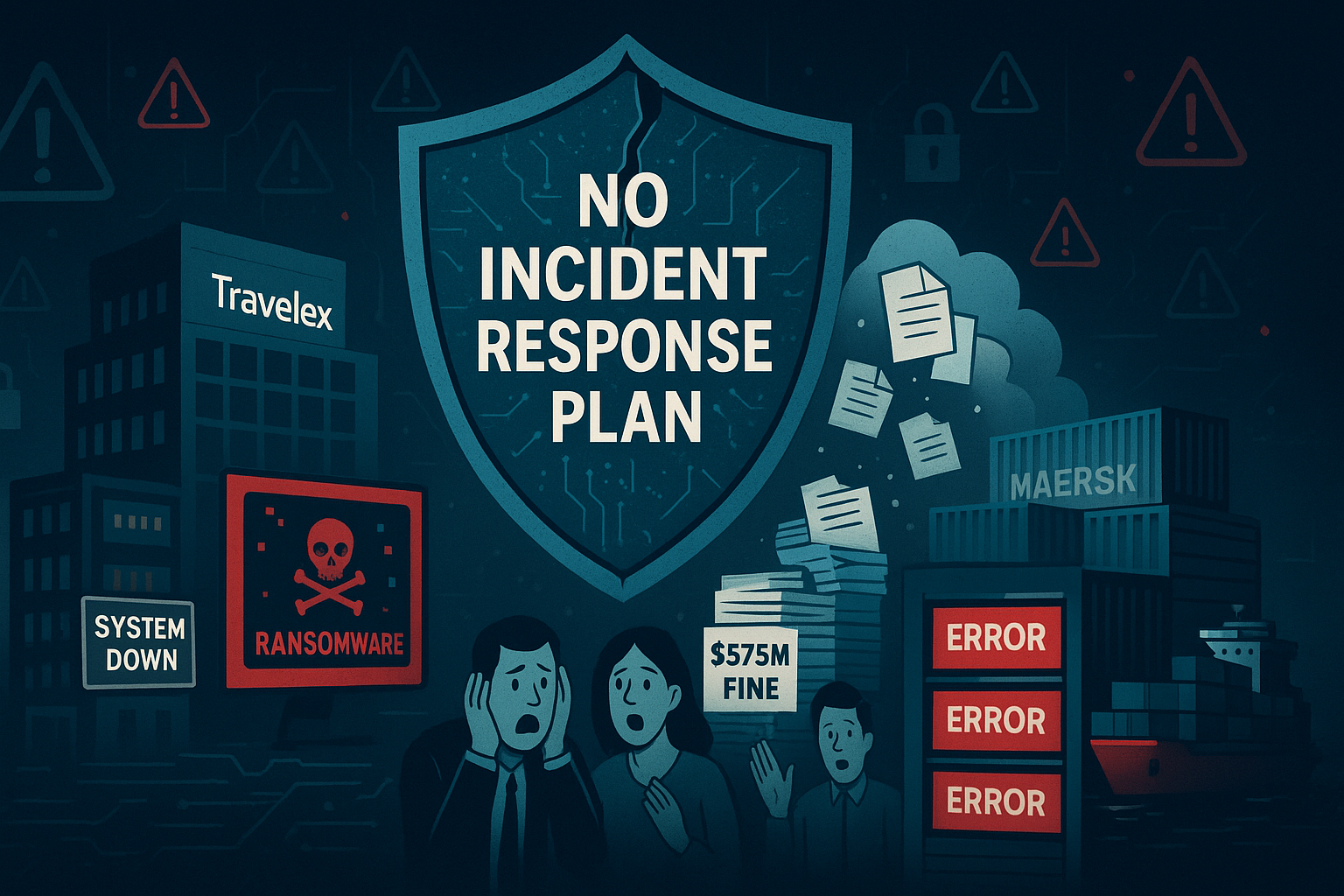What Happened When These Businesses Skipped Incident Planning
Companies without cyber incident response plans faced massive financial and reputational damage.
Regulatory penalties and legal consequences intensified the impact.
Lack of preparedness led to slow response, data loss, and customer churn.
A proactive incident response strategy can significantly mitigate post-breach chaos.
Why Incident Planning is a Non-Negotiable in 2025 Cyber threats aren’t just increasing—they’re evolving. Yet, many enterprises still assume that strong firewalls and antivirus solutions are enough. The truth?
Cybersecurity without an incident response (IR) plan is like a fire station without an evacuation protocol. This blog explores real-world cyber incidents that escalated due to a lack of planning—and the high price these companies paid.
What happens if you don’t have a cyber incident response plan?Introduction: Why Incident Planning is a Non-Negotiable in 2025
Cyber threats aren’t just increasing—they’re evolving. Yet, many enterprises still assume that strong firewalls and antivirus solutions are enough. The truth? Cybersecurity without an incident response (IR) plan is like a fire station without an evacuation protocol.
This blog explores real-world cyber incidents that escalated due to a lack of planning—and the high price these companies paid.
What happens if you don’t have a cyber incident response plan?
🚨 Case Study #1: Travelex—Ransomware Shuts Down Global Operations
Industry: Financial Services
Impact: 2 weeks of operational downtime | $25M in damages
In late 2019, UK-based currency exchange giant Travelex fell victim to a REvil ransomware attack. With no updated or rehearsed incident response plan, Travelex:
-
Took over 2 weeks to restore its systems.
-
Lost critical business during the busy holiday season.
-
Paid a $2.3M ransom, according to leaked reports.
-
Faced regulatory scrutiny from the UK’s Financial Conduct Authority (FCA).
Key takeaway: A delay in detection and response worsened the damage—financially and reputationally.

⚠️ Case Study #2: Equifax – The $575M Mistake
Industry: Credit Bureau
Incident: 2017 Data Breach
Data Lost: ~147 million records
Regulatory Fine: $575 million (U.S. Federal Trade Commission)
The Equifax breach is now a textbook example of what not to do. The company failed to patch a known vulnerability in Apache Struts, but more critically, they lacked an effective incident response plan:
-
It took 76 days to detect the breach.
-
Public disclosure was mishandled, causing customer panic.
-
Incident communication was disorganized and unclear.
What went wrong?
-
No formal incident escalation process.
-
Poor internal communication protocols.
-
No post-breach remediation checklist.
💡 Semantically related term: breach notification timelines.
📉 Case Study #3: Maersk – WannaCry Cripples Global Shipping
Industry: Logistics & Supply Chain
Year: 2017
Impact: $300 million in losses
When the WannaCry ransomware infected Maersk, the shipping giant’s global IT infrastructure collapsed:
-
4,000 servers were wiped.
-
Operations in 600 ports came to a standstill.
-
Even domain controllers and access systems were locked out.
Despite backups being available, Maersk’s lack of IR readiness caused massive delays in response and restoration.
Lessons learned:
-
Backup ≠ recovery if there’s no tested IR workflow.
-
Cross-border coordination requires clear playbooks.
-
Every second counts when operations span continents.
🛡️ Why Most Businesses Ignore Incident Planning (Until It’s Too Late)
Despite the headlines, many enterprises still delay building IR strategies. Why?
-
Misconception: “It won’t happen to us.”
-
Budget constraints: Security teams often underfunded.
-
Lack of expertise: Incident response is technical and evolving.
-
Over-reliance on cybersecurity tools instead of strategy.
Why do companies delay cybersecurity planning?
What Should Be in a Good Incident Response Plan?
An effective IR plan goes beyond detection. It covers:
-
Roles & Responsibilities: Who handles what?
-
Detection & Triage: How are threats identified?
-
Containment Strategy: Isolation protocols and damage limitation.
-
Eradication & Recovery: Full cleanup and restoration processes.
-
Communication Plans: Internal and external.
-
Post-Incident Review: To learn, adapt, and prevent future issues.
Don’t wait for a breach to test your cybersecurity posture.
👉 Schedule a free cybersecurity audit to identify vulnerabilities and simulate incident response today.
💬 Real-World Repercussions of Skipping IR Planning
|
Company |
Type of Incident |
Response Time |
Financial Impact |
|
Travelex |
Ransomware (REvil) |
14+ days |
$25M+ + reputation |
|
Equifax |
Data Breach (Exploit) |
76 days |
$575M + lawsuits |
|
Maersk |
Ransomware (WannaCry) |
Global outage |
$300M + service loss |
These companies had resources—but they lacked preparedness.
🧠 FAQs
Q1. What is the difference between a cybersecurity policy and an incident response plan?
A cybersecurity policy outlines preventive practices. An IR plan defines actions during and after a breach.
Q2. How often should an incident response plan be tested?
At least once every 6 months, or after any major system update.
Q3. Who should be part of the incident response team?
IT Security, Legal, PR, HR, and executive leadership.
Q4. Can SMEs benefit from incident response plans?
Absolutely. Smaller enterprises are even more vulnerable, with less room for recovery.
Q5. What are the legal implications of not having a plan?
Non-compliance with GDPR, HIPAA, or PCI-DSS can lead to fines, lawsuits, and criminal liability.
Your business may not make headlines like Equifax—but the damage can still be devastating.
🛡️ Book a cybersecurity audit today and discover how resilient your incident response really is.
![]()






